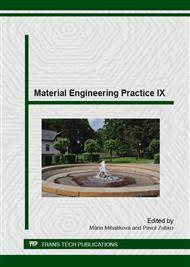p.22
p.26
p.30
p.35
p.41
p.45
p.51
p.57
p.61
Changing the Hardness Automotive Steels at Different Strain Rate
Abstract:
Currently, the automotive industry used sheets of different qualities. The most common include IF (inter Interstitial Free) steel and alloyed steel. Use the sheet quality depends on the point of application in the production car. Testing and product testing is a standard part of the process of innovation and production itself. Testing of automotive steels under dynamic conditions is increasingly important. Changing the hardness HV 1 was performed on the fractured bars on the static and dynamic loading conditions. Tests were made on steel IF and S 460.
Info:
Periodical:
Pages:
41-44
Citation:
Online since:
December 2014
Authors:
Keywords:
Price:
Сopyright:
© 2015 Trans Tech Publications Ltd. All Rights Reserved
Share:
Citation:


